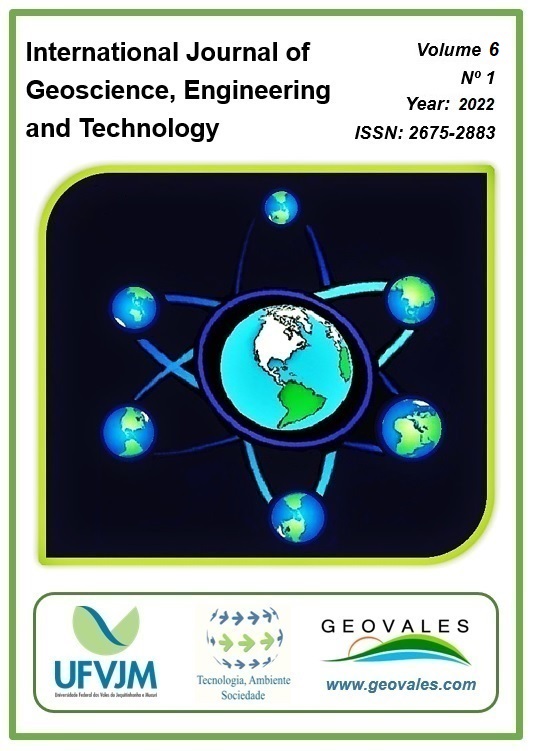Evaluation of Non-Newtonian Fluid Flow in Coiled Tubing
DOI:
https://doi.org/10.70597/ijget.v6i1.476Keywords:
Coiled Tubing, Pressure drop, Well abandonmentAbstract
The coiled tubing system is made up of a long and flexible steel tube wound around a coil, which can reach over 6000 meters in length. During operation, part of the tube remains wound on the spool, while the other part is directed into the well. In this tube, different types of fluids, such as water, cement paste and displacement fluid, are pumped in order to ensure the isolation of the well. This work presents three stage of experiment that was carried out with water and xanthan gum solutions that had rheological properties and behavior that approximated a used cement paste. In the first stage of this study, data from pumping water and cement paste in a real well abandonment process were used to validate a mathematical modeling. The simulated data approximated the field data with a mean relative error below 9%. In the second stage experiments were carried out with xanthan gum solution at a concentration of 0.5 lb bbl-1, and temperatures of 30ºC and 40ºC. The objective of this study was to verify if the model proposed by the author is valid for different concentrations and temperatures. Finally, in the third stage of the study, simulations were carried out in order to obtain the maximum pumping capacity of the system, with the installation of a new pump. The simulated data shown that the water flow reached the turbulent regime with a maximum pumping flow of 2 m3 h-1, while the flow of the xanthan gum solution did not reach the turbulent regime, even reaching a maximum flow of 3 m3 h-1.
References
Azouz, I., Shah, S.N, Vinod, P.S., and Lord, D.L., 1998. Experimental Investigation of Frictional Pressure Losses in Coiled Tubing. SPE Production & Facilities, 13(02), pp. 91–96. https://doi.org/10.2118/37328-PA.
Bracamonte, J. and Diaz, M., 2018. No Title. Available at: <https://blog.wellcem.com/plug-and-abandonment-coiled-tubing> [Accessed: 1 November 2021].
Cioncolini, A. and Santini, L., 2006. An experimental investigation regarding the laminar to turbulent flow transition in helically coiled pipes. Experimental Thermal and Fluid Science, 30(4), pp. 367–380. https://doi.org/10.1016/j.expthermflusci.2005.08.005
Dean, W. R., 1927. Note on the motion of Fluid in a Curved Pipe. Philosophical Magazine and Journal of Science, 20, pp. 208–223. http://dx.doi.org/10.1080/14786440708564324
ICOTA (Intervention and Coiled Tubing Association) (2019). Available at: <https://www.icota.com/technical/history> [Accessed 1 November 2021].
Ito, H., 1959. Friction factors for turbulent flow in curved pipes. J. Basic Sci. Eng., pp. 123–134. https://doi.org/10.1115/1.4008390
Jain, S., Singhal, N. and Shah, S. N., 2004. Effect of Coiled Tubing Curvature on Friction Pressure Loss of Newtonian and Non-Newtonian Fluids - Experimental and Simulation Study. All Days. SPE. https://doi.org/10.2118/90558-MS
Mashelkar, R. A. and Devarajan, G. V., 1977. Secondary flows of non-Newtonian fluids: Part III—turbulent flow of viscoinelastic fluids in coiled tubes: a theoretical analysis and experimental verification.. Trans. Inst. Chem. Eng., 55, pp. 29–37.
McCann, R. C. and Islas, C. G., 1996. Frictional Pressure Loss During Turbulent Flow in Coiled Tubing. All Days. SPE. https://doi.org/10.2118/36345-MS
Medjani, B. and Shah, S. N., 2000. A new approach for predicting frictional pressure losses of non-newtonian fluids in coiled tubing. SPE. https://doi.org/10.2118/60319-MS
Mishra, P. and Gupta, S. N., 1979. Momentum Transfer in Curved Pipes. 1. Newtonian Fluids. Industrial & Engineering Chemistry Process Design and Development, 18(1), pp. 130–137. https://doi.org/10.1021/i260069a017
Oliveira, B. R., Leal, B.C., Filho, P.L., Borges, R.F.O., Paraíso, E.C.H., Magalhães, S.C., Rocha, J.M., Calçada, L.A. and Scheid, C.M., 2021. A model to calculate the pressure loss of Newtonian and non-Newtonian fluids flow in coiled tubing operations. Journal of Petroleum Science and Engineering. https://doi.org/10.1016/j.petrol.2021.108640
Pereira, C. E. G., 2018. Estudo da perda de carga no escoamento de fluidos Newtonianos em coiled tubing. Universidade Federal Rural do Rio de Janeiro.
Shaqlaih, A. and Ahmed Kamel, A., 2013. AIC Applications in Coiled Tubing Hydraulics. Proceedings of SPE/IADC Middle East Drilling Technology Conference and Exhibition. Society of Petroleum Engineers. https://doi.org/10.2118/166682-MS
Srinivasan, P. S., Nandapurkar, S. S. and Holland, F. A., 1970. Friction factors for coils. Trans. Inst. Chem. Eng., 48, pp. T156–T161.
White, C. M., 1929. Stream Flow through Curved Pipes. 51(1903), pp. 645–663. https://doi.org/10.1098/rspa.1929.0089
White, C. M., 1932. Fluid friction and its relation to heat transfer. Trans. Inst. Chem. Eng., 10, pp. 66–86.
Willingham, J. and Shah, S., 2000. Friction Pressures of Newtonian and Non-Newtonian Fluids in Straight and Reeled Coiled Tubing. Proceedings of SPE/ICoTA Coiled Tubing Roundtable. Society of Petroleum Engineers. https://doi.org/10.2523/60719-MS.
Zhou, Y. and Shah, S. N., 2004. Rheological Properties and Frictional Pressure Loss of Drilling, Completion, and Stimulation Fluids in Coiled Tubing. Journal of Fluids Engineering, 126(2), pp. 153–161. https://doi.org/10.1115/1.1669033
Downloads
Published
How to Cite
Issue
Section
License
Copyright (c) 2022 International Journal of Geoscience, Engineering and Technology

This work is licensed under a Creative Commons Attribution-NonCommercial-ShareAlike 4.0 International License.
All articles published in this journal are licensed under a Creative Commons Attribution-NonCommercial-ShareAlike 4.0 International.












